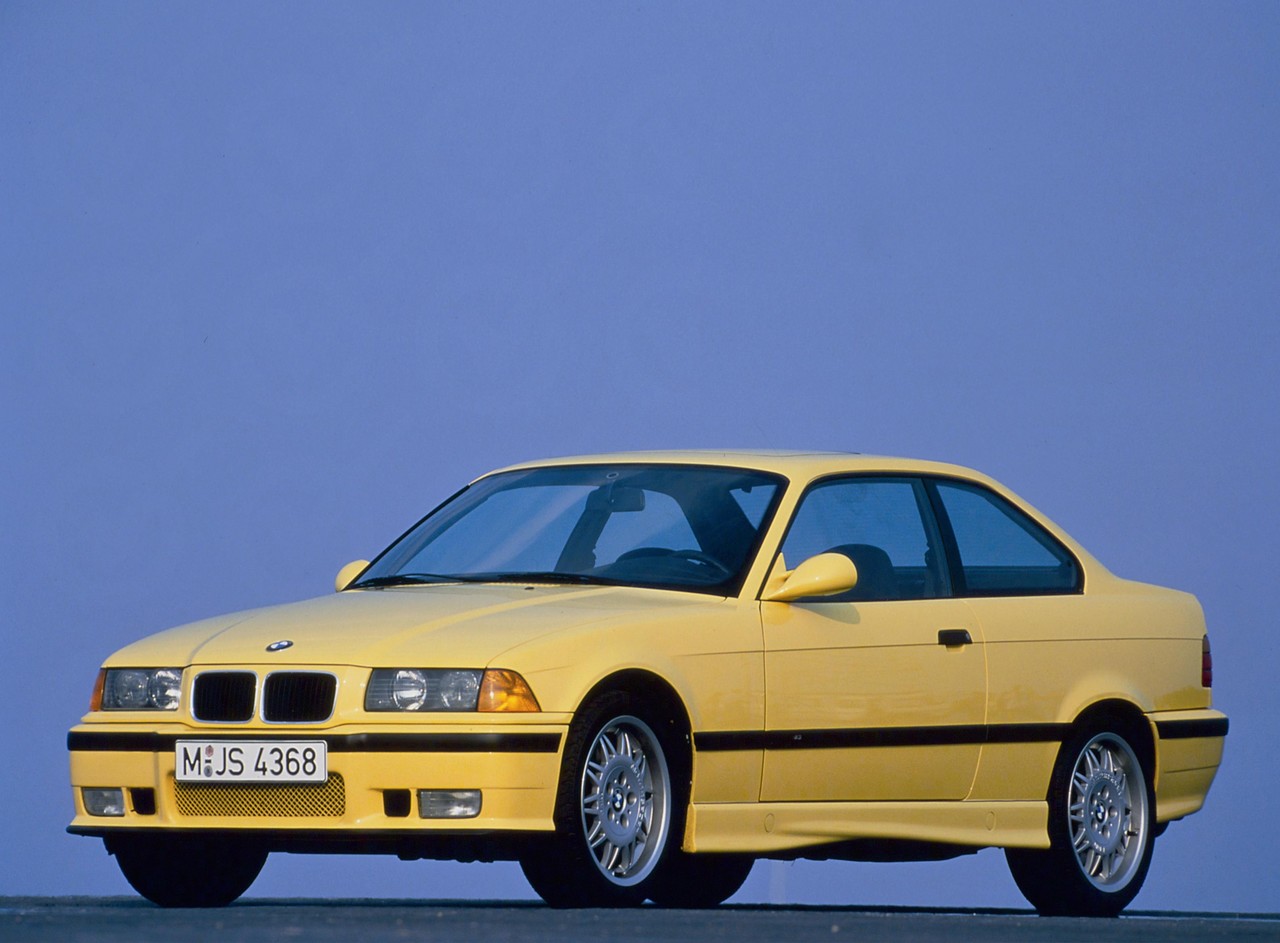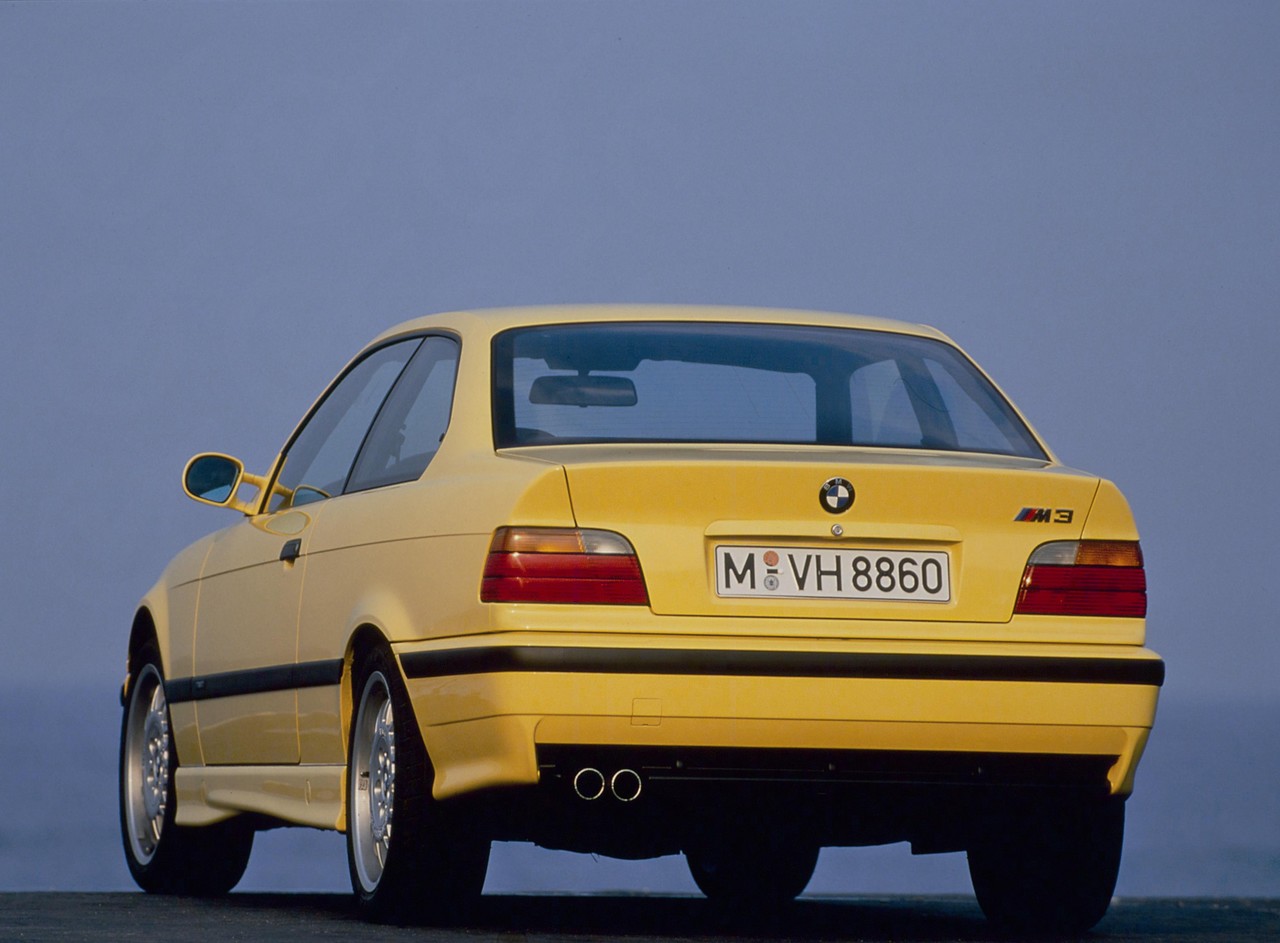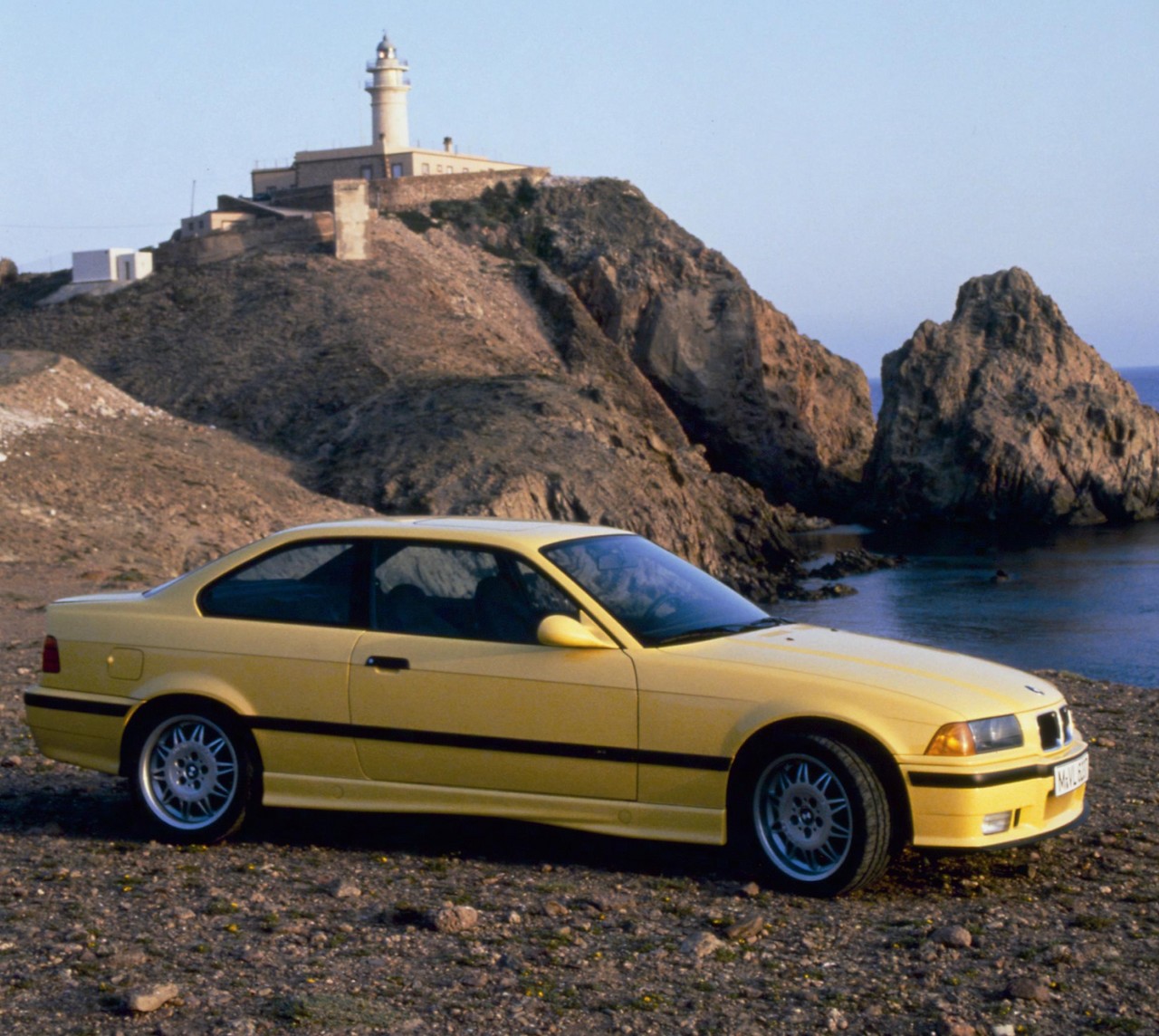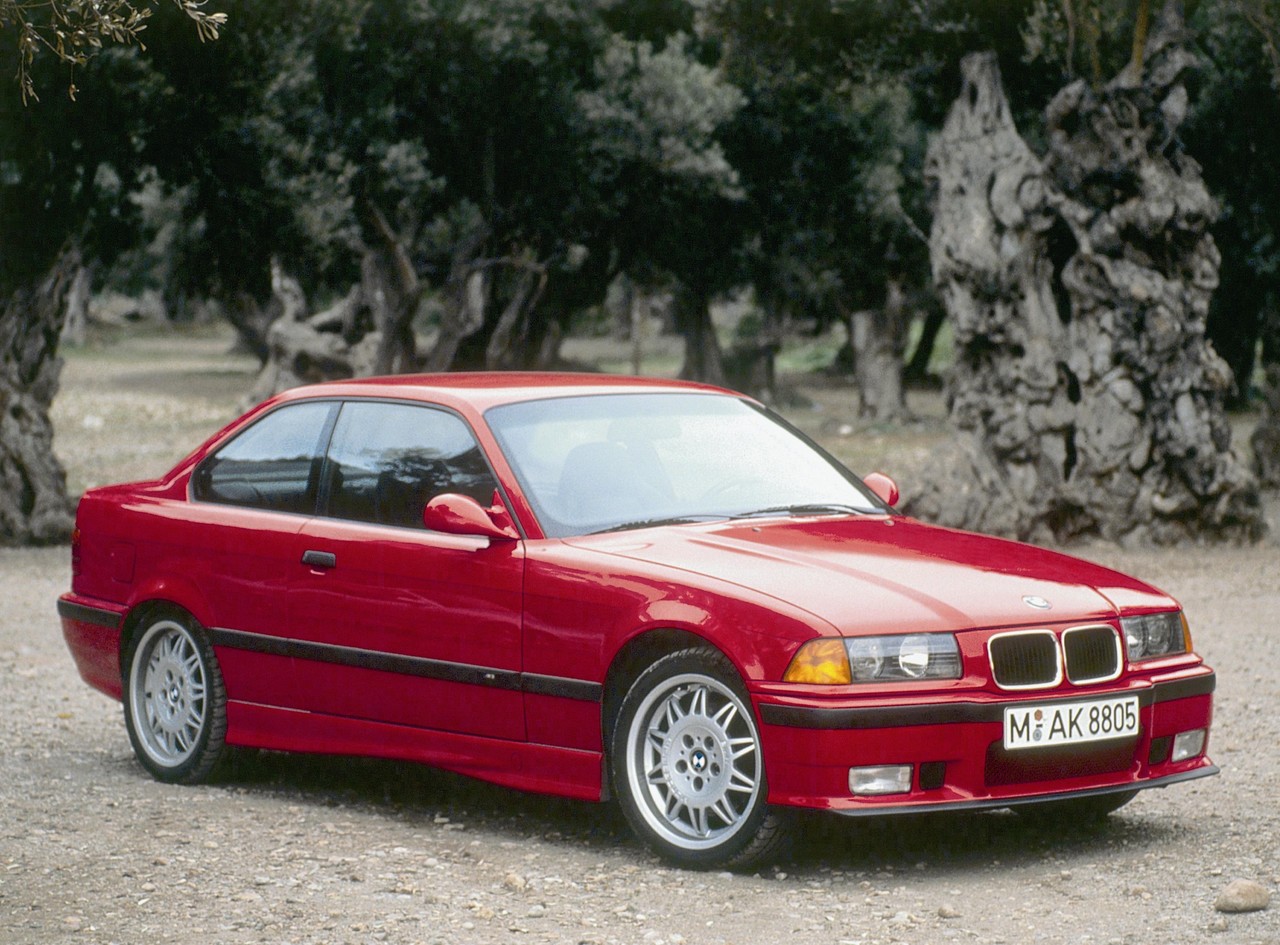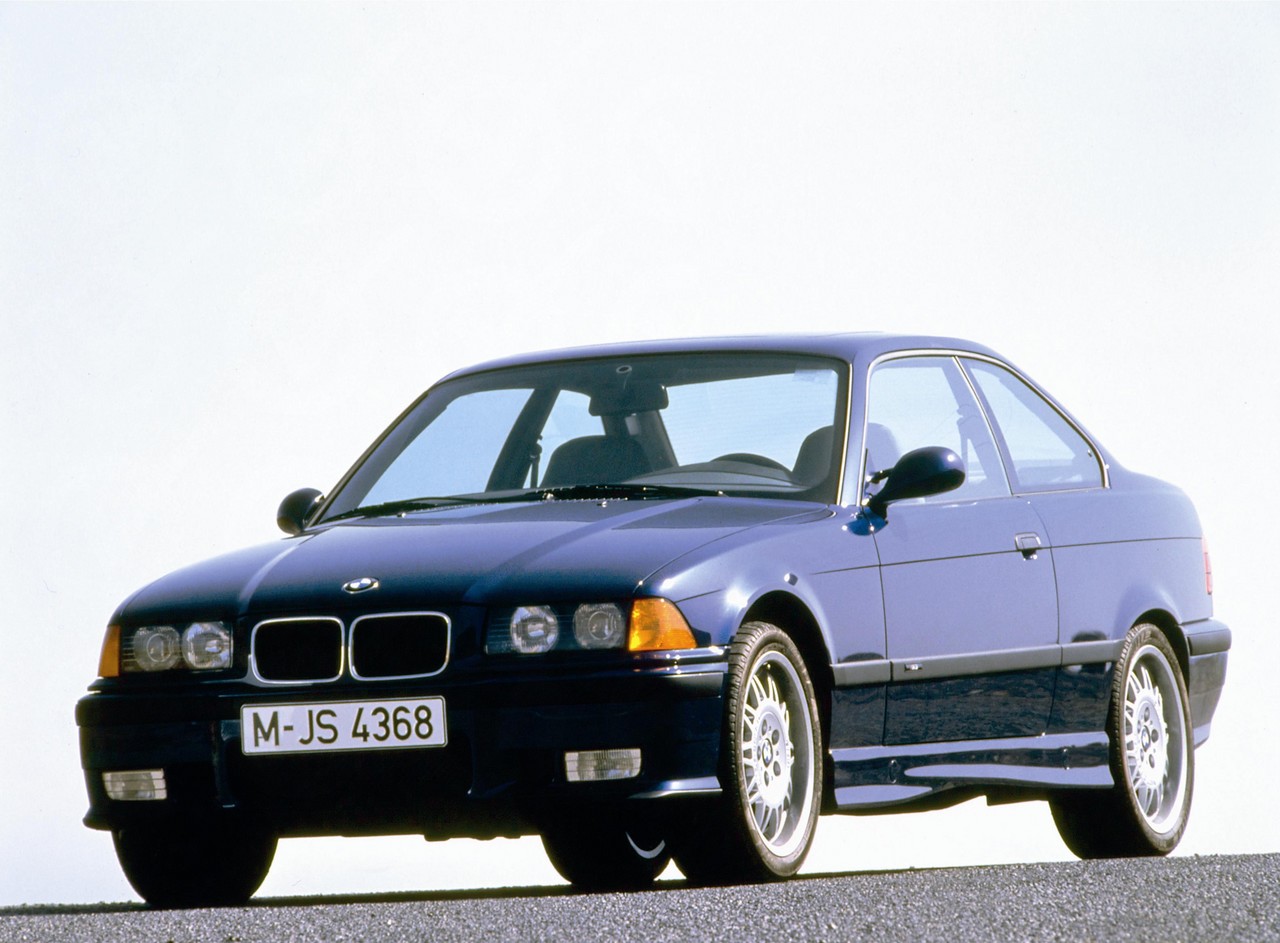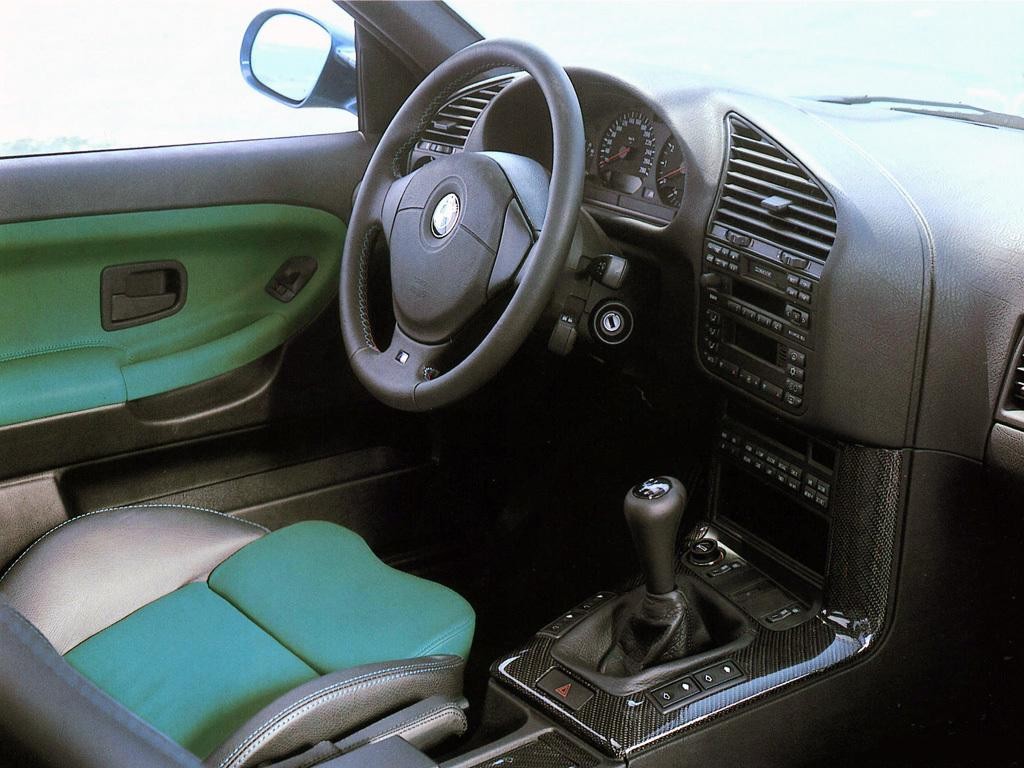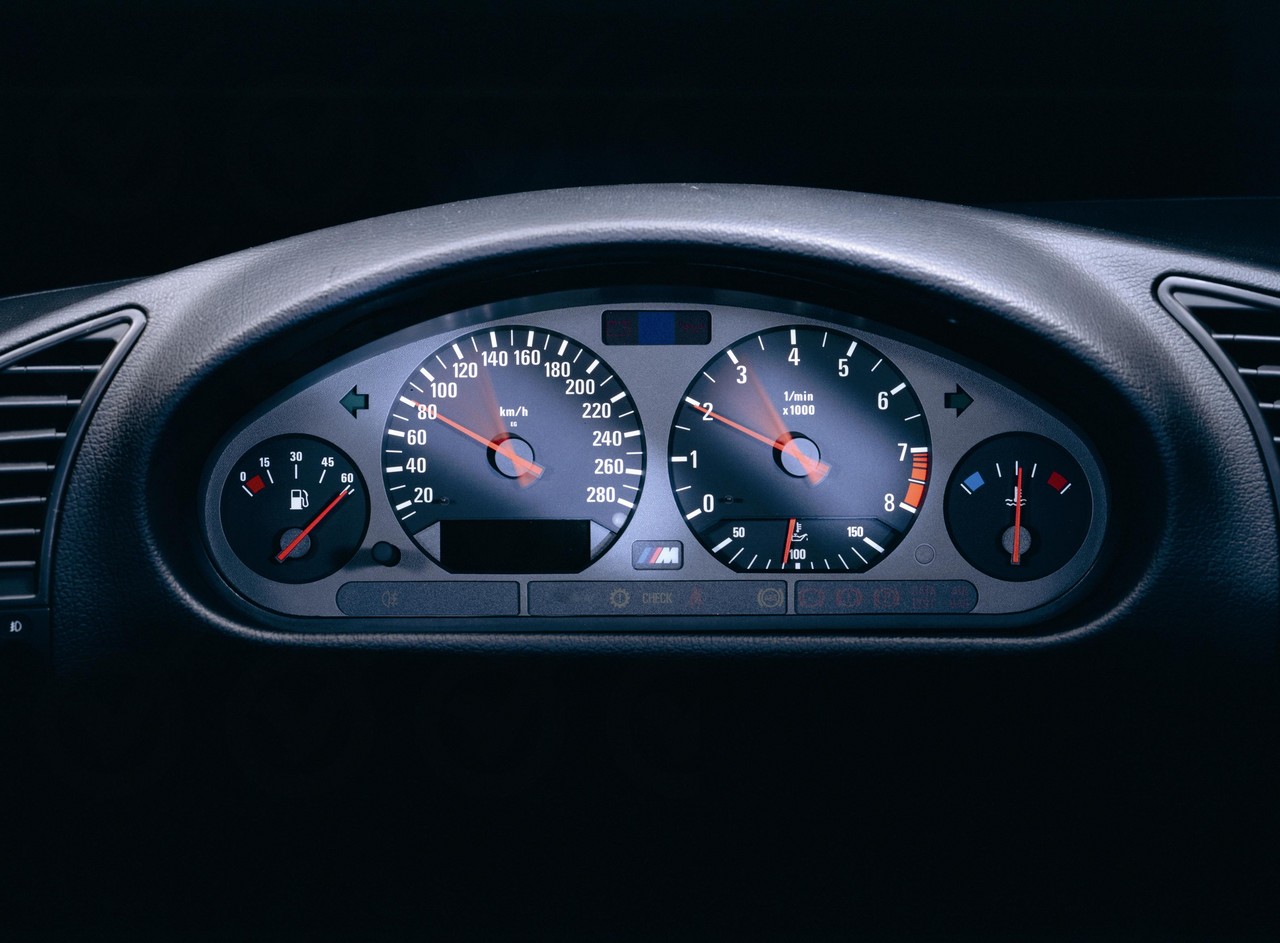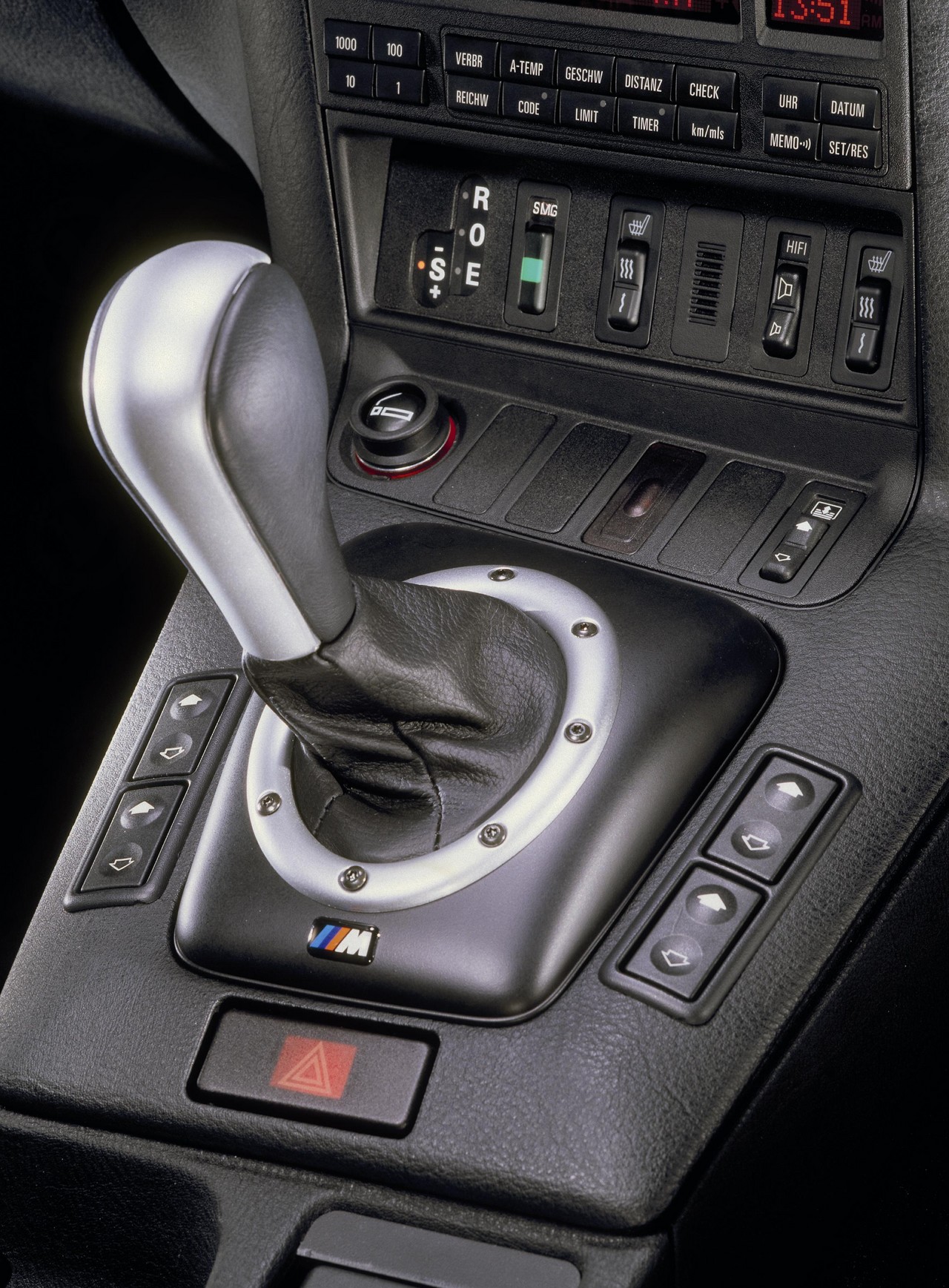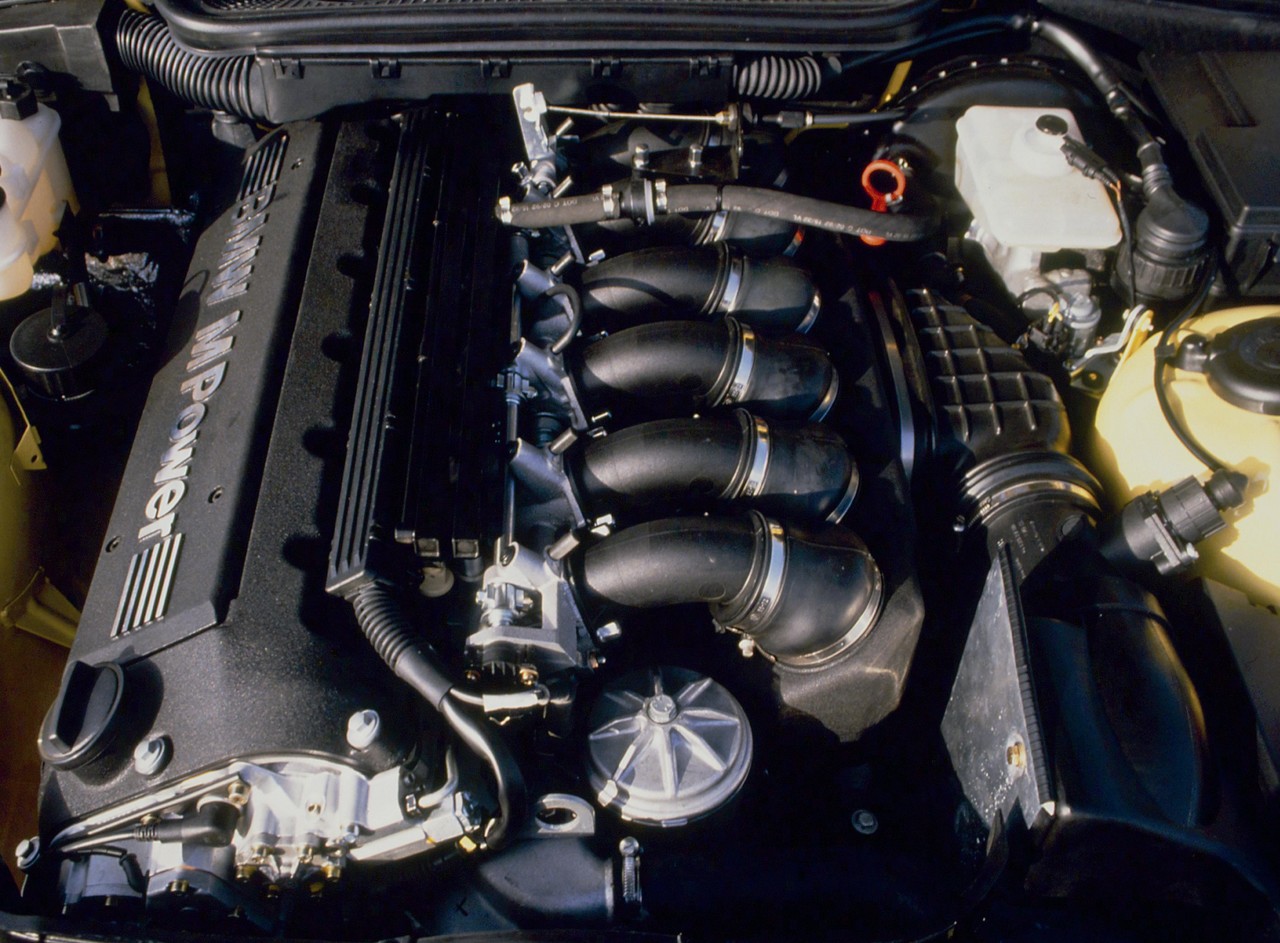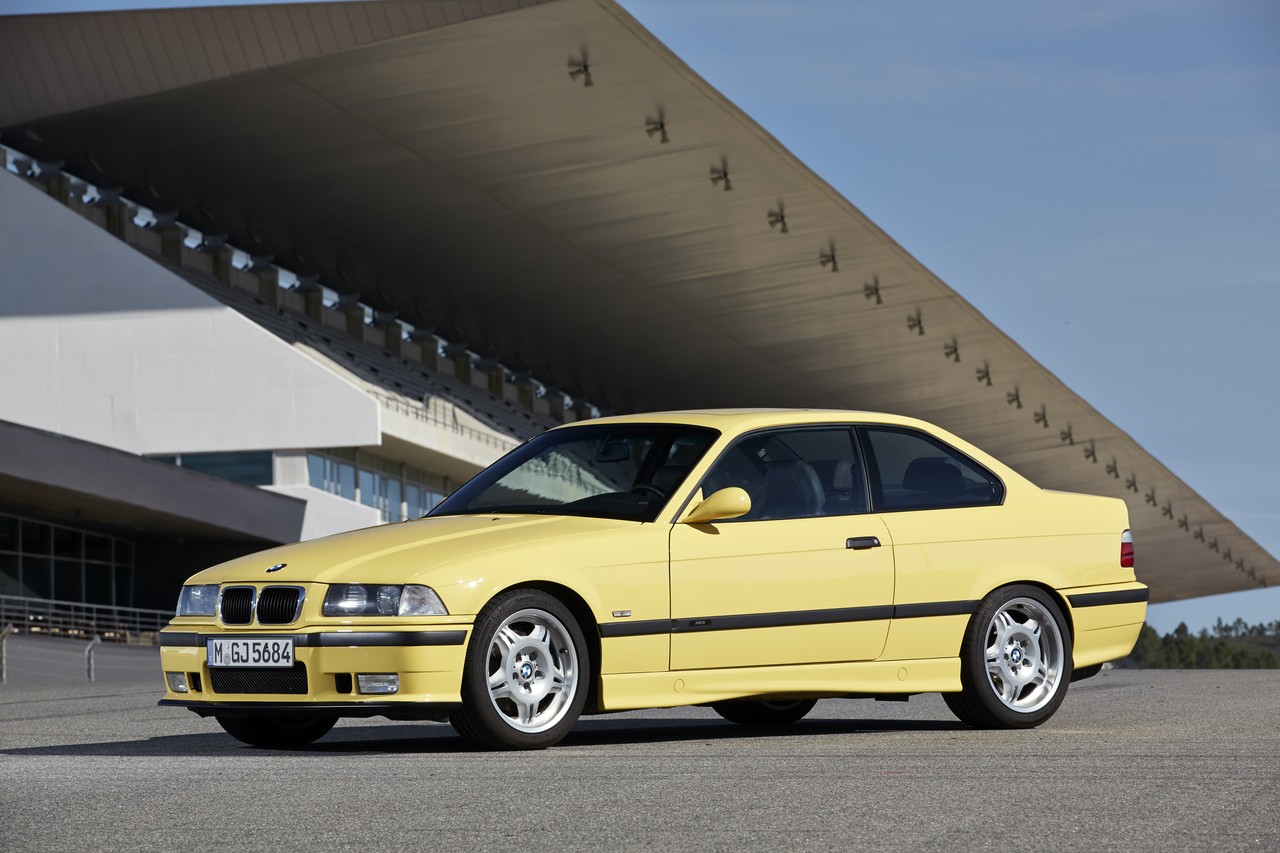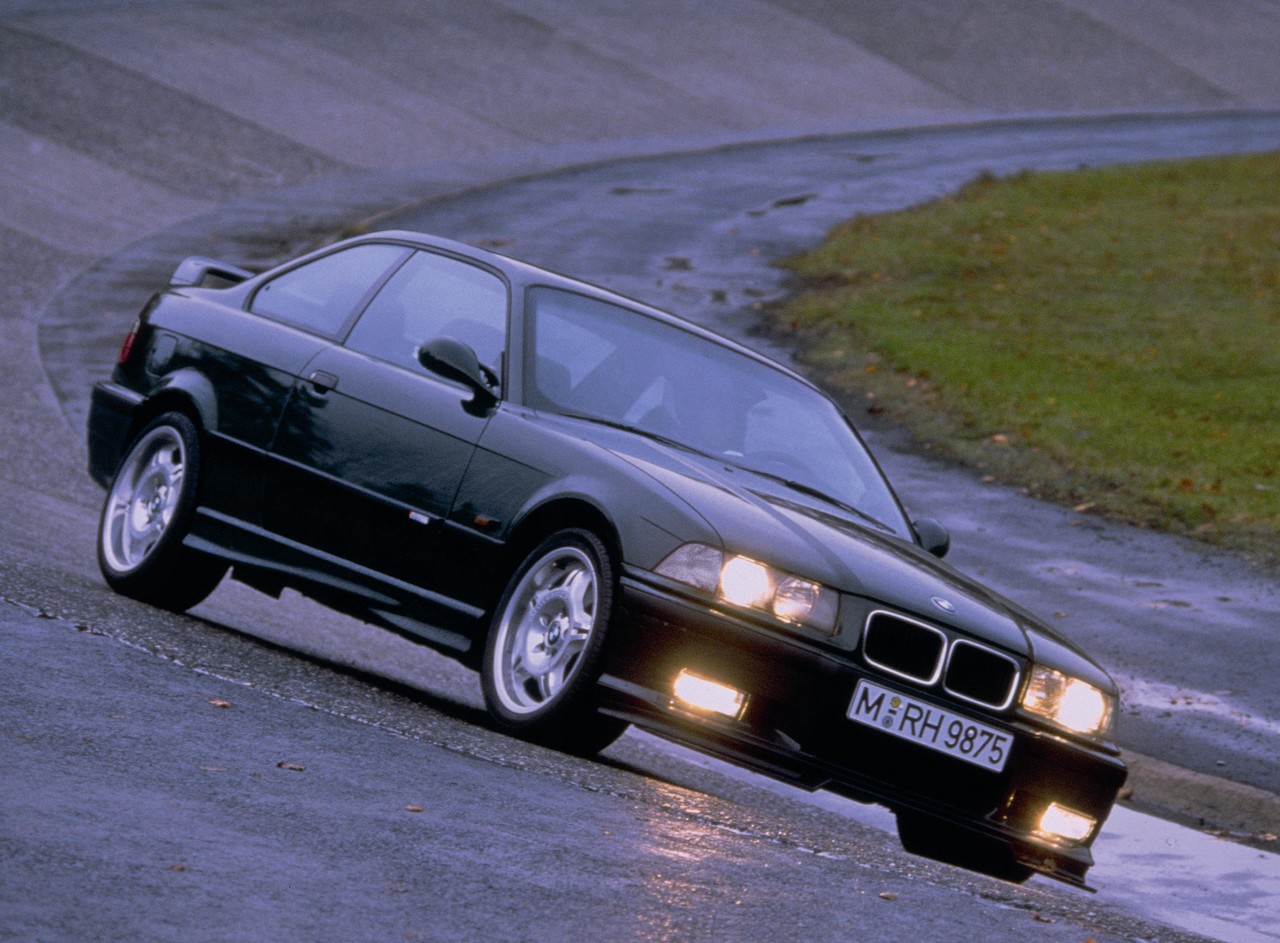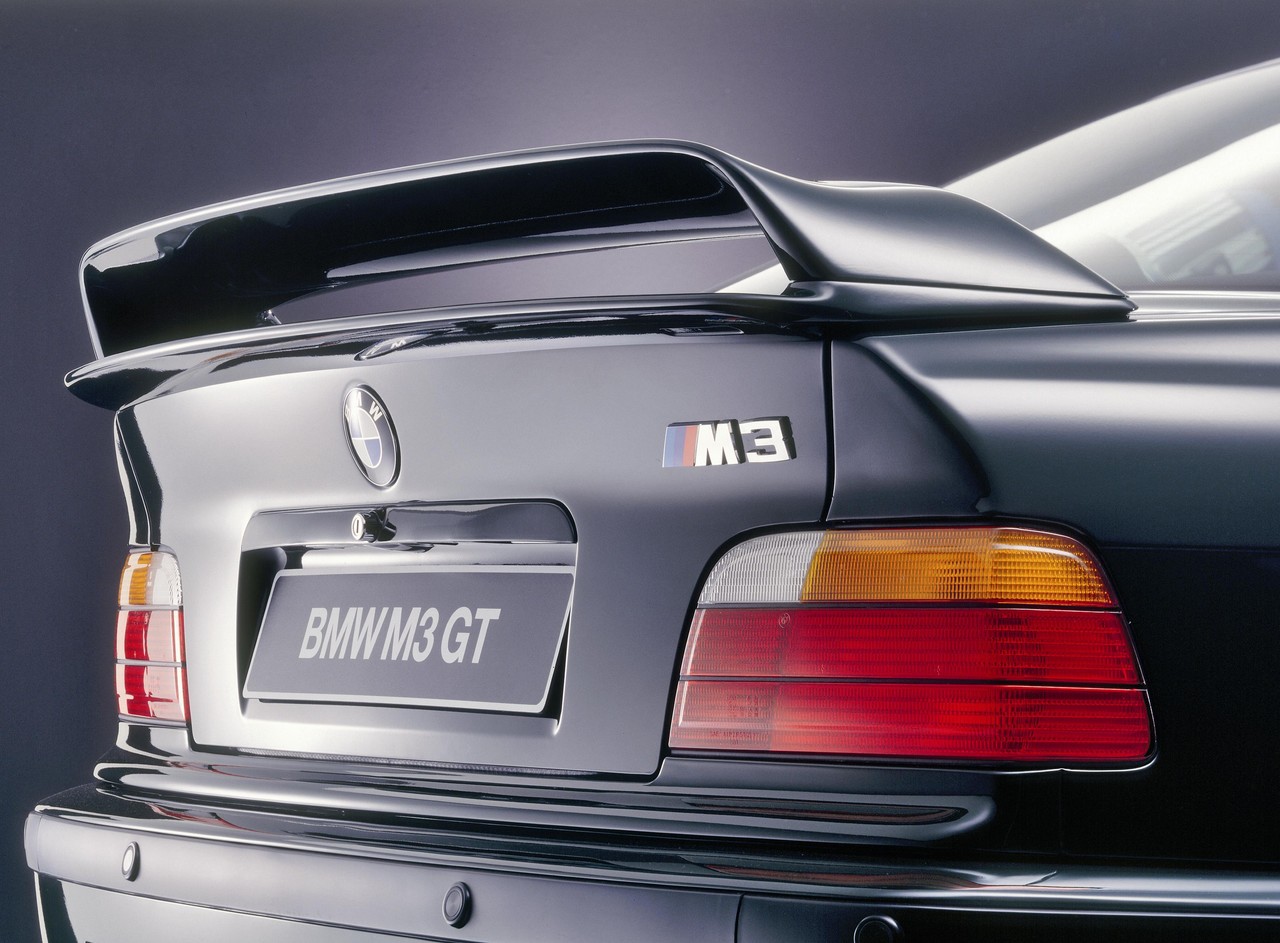
- Flexible six cylinder engine delivers throughout the rev range
- Accurate steering provides excellent feedback
- Excellent dynamics
- A joy to drive
- S50 engine susceptible to VANOS failure
- Cramped rear seat
- Stiff accelerator pedal
Overview
Released in Australia in June 1994, the BMW E36 M3 was initially available as a high-performance coupe; the E36 M3 Convertible has been reviewed separately. Manufactured in Regensburg, Germany, the rear-wheel drive E36 M3 Coupe was first offered with a 3.0-litre inline six-cylinder petrol engine that was mated to a five-speed manual transmission.
In January 1996, production of right-hand M3 Coupes with 3.2-litre engines commenced. These models – known in the UK as the M3 Evolution – had six-speed manual transmissions, with sequential manual transmissions available from April 1997.
S50B30 and S50B32 engines
The 2990 cc S50B30 engine had a cast iron block with 86.0 mm bores and an 86.0 mm stroke, an aluminium-alloy cylinder head (ported and polished), lightweight pistons, graphite-coated connecting rods, sequential fuel injection, individual throttle bodies for each cylinder, double overhead camshafts (chain-driven), variable intake camshaft timing (BMW’s Variable NOckenwelle Steuerung or VANOS), four valves per cylinder with heavy-duty springs, a compression ratio of 10.8:1 and Bosch Motronic M3.3 engine management.
Other features of the S50B30 engine included a plastic inlet manifold, magnesium valve cover for the cylinder head, equal-length exhaust manifolds, a dual mass flywheel and coil-pack ignition.
For the S50B32 engine , bore and stroke were increased to 86.4 mm and 91.0 mm for a capacity of 3201 cc. Other changes included an increased compression (11.3:1), variable intake and exhaust camshaft timing (double VANOS), Siemens MSS50 engine management, more efficient intake and exhaust systems, and a dual pick-up oil sump.
Manual and SMG transmissions
For the S50B30 engine, the E36 M3 Coupe had a five-speed ZF ‘Type C’ manual transmission. Gear ratios for this transmission were 3.67 (1st), 2.00 (2nd), 1.41 (3rd), 1.24 (4th) and 1.00 (5th); the final drive ratio was 3.15:1.
For the S50B32 engine, the E36 M3 Coupe had a six-speed Getrag manual transmission. Gear ratios for this transmission were 4.23 (1st), 2.51 (2nd), 1.67 (3rd), 1.23 (4th), 1.00 (5th) and 0.83 (6th); the final drive ratio was 3.23:1.
Introduced as an option in April 1997, the Sequential M Gearbox (SMG) had automatic and sequential shift modes. Although it had the same gearset as the six-speed Getrag transmission, the SMG used an electro-magnetically controlled clutch that was triggered by pulling or pushing on the gear lever. Two further valves operated a pair of hydraulic cylinders that would engage each gear, thus providing gearshifts as fast as 0.4 seconds.
Dimensions and body
The E36 M3 Coupe was 4433 mm long, 1710 mm, 1365 mm tall and had a 2700 mm long wheelbase. Furthermore, kerb weight was 1460 kg (unladen), while the M3 Coupe had a drag coefficient of 0.32 Cd.
Compared to the E36 3-Series Coupe , the M3 Coupe could be identified by its front airdam with body-coloured mesh, aerodynamic door mirrors, sculpted side valance panels, wider protective side rub strips and rear diffuser.
Suspension
The E36 M3 Coupe had a single-joint spring strut front axle and a central-arm rear axle with longitudinal control arms and double track control arms (also known as a ‘Z-axle’). Relative to the E36 3-Series Coupe, changes for the E36 M3 Coupe included:
- A 31 mm lower ride height;
- A 0.55 mm wider front track and 0.90 mm wider rear track;
- Firmer shock absorbers and springs;
- Reinforced spring mounting plates;
- Thicker anti-roll bars; and,
- Revised suspension geometry.
With the introduction of the S50B32 engine, the following suspension changes were introduced:
- Revised suspension geometry with increased front castor;
- Firmer springs and shocks;
- Stronger wheel hubs; and,
- Front anti-roll bars linked to struts for reduced mass.
Steering
The E36 M3 Coupe had a unique M-tuned steering rack with progressive ratios, while power assistance varied with engine speed. For models with the S50B30 engine, steering ratios varied from 15.4:1 to 19.8:1 (for a mean of 17.6:1), while 3.0 turns were required for lock-to-lock. For the S50B32 M3, the steering ratio had a mean of 17.8:1, while 3.2 turns were required for lock-to-lock.
| Engine | Years | Trans. | Peak power | Peak torque | |
|---|---|---|---|---|---|
| M3 | 3.0-litre petrol I6 (S50 B30) | 1994-96 | 5sp man. | 210 kW at 7000 rpm | 320 Nm at 3600 rpm |
| 3.2-litre petrol I6 (S50 B32) | 1996-99 | 6sp man. | 236 kW at 7400 rpm | 350 Nm at 3250 rpm | |
| 1997-99 | 6sp semi-auto | ||||
| M3-R | 3.0-litre petrol I6 (S50 B30) | 1996 | 5sp man. | 242 kW at 7000 rpm | 320 Nm at 3600 rpm |
Safety equipment
The E36 M3 was initially fitted with a driver’s airbag and ABS; from March 1995, the M3 was also fitted with a front passenger airbag.
Brakes
The E36 M3 Coupe had 315 mm by 28 mm vented front brake discs and 312 mm by 19.9 mm vented rear discs. For the S50B32 engine, two-piece ‘floating’ front discs were introduced.
Features: M3 Coupe (1994-95)
Standard features for the E36 M3 included 17.0 x 7.5J ‘M Double Spoke’ cast alloy wheels with 235/40 ZR17 tyres, a ten speaker Alpine sound system with a radio and cassette player, air conditioning, contoured sports seats with ‘Hurricane’ cloth trim, remote central locking, power windows, power mirrors and a security system (including an immobiliser).
Inside, the E36 M3 Coupe was distinguished by its ‘M’ instrument cluster with red needles and M logo, sill plates with ‘M3’ logo, black headliner and ‘M’ gearshift knob.
The M3 was also fitted with a limited slip differential which had a 25 per cent locking action.
Features: M3 Coupe (1996-98)
The S50B32-powered M3 was fitted with ‘M Double-Spoke II’ 17 x 7.5J front alloy wheels with 225/45 ZR17 tyres and 17 x 8.5J rear alloy wheels with 245/40 ZR17 tyres. Inside, the S50B32 M3 had restyled M-Cross cloth upholstery and leather door inserts.
Visually, the post-1996 M3 could be identified by its clear indicator lenses, black mesh front airdam. To reduce mass, the post-1996 M3 Coupe also had aluminium doors (understood to reduce mass by around 14 kg).
1998 M3 Coupe 25thAnniversary Edition
In December 1998, the M3 Coupe 25thAnniversary Edition was released. Solely offered in Australia, production was limited to 50 vehicles. For the 25thAnniversary Edition, standard features extended to include M forged double spoke alloy wheels, Nappa leather upholstery (in Black, Light Grey, Mulberry or Modena Natur), wood trim (in Anthracite Birch or Mulberry in conjunction with the Modena Natur leather), a sunroof and sterling silver ‘BMW M 25thanniversary’ plaque.
The M3 Coupe 25thAnniversary Edition was available in Dakar Yellow II, Cosmos Black metallic, Estoril Blue metallic, Fern Green metallic or Aegean Blue metallic paint finishes.
1994 BMW M3-R
In late 1994, BMW Australia ordered fifteen (15) E36 M3-R models to compete in the Australian Super Production series (GT Production class), of which eleven were made available to the general public (provided they possessed a CAMS licence) and four were retrained for racing. The M3-R models were built as standard M3 vehicles but converted to M3-R specification by Frank Gardner Racing – in Australia – between March and April 1995.
For the S50B30 engine, modifications included:
- Schnitzer Motorsport GmbH camshafts;
- Revised intake and exhaust ports;
- A cold air snorkel into air filter box;
- An oil restrictor in the head;
- A more aggressive tune;
- A lighter flywheel;
- A stronger driveshaft (variously reported as being from the E34 M5 or E31 850Ci); and,
- A dual-pickup oil sump.
For the transmission, there was a reinforced AP Racing clutch and the final drive ratio was reduced (understood to be 3.23:1). As a result of these changes, the M3-R was the most powerful S50B30-powered M3 produced.
Other performance modifications included:
- M cross-spoke alloy wheels with 17 x 7.5J front tyres and 17 x 8.5J rear tyres;
- King springs fitted to Group N adjustable struts and rear perches;
- Larger AP Racing front brake discs with four-piston calipers and AP Racing rear calipers (standard rear discs retained);
- Adjustable front and rear GT spoilers, with rear rubber lip extensions.
To reduce weight, the following features were omitted: the air conditioning system, radio, central locking, fog lights, rear seats and Check Control system. Inside, the M3-R had an Anthracite M cloth/Amaretta suede interior.
While early examples had non-staggered BBS wheels, later models had staggered BBS wheels and an individually numbered plaque that fitted to the centre console. Furthermore, a bolt-in FIA-approved roll cage was available as an option (locally produced by Dencar). All 15 coupes had an Alpine White III (300) paint finish.
Related links
